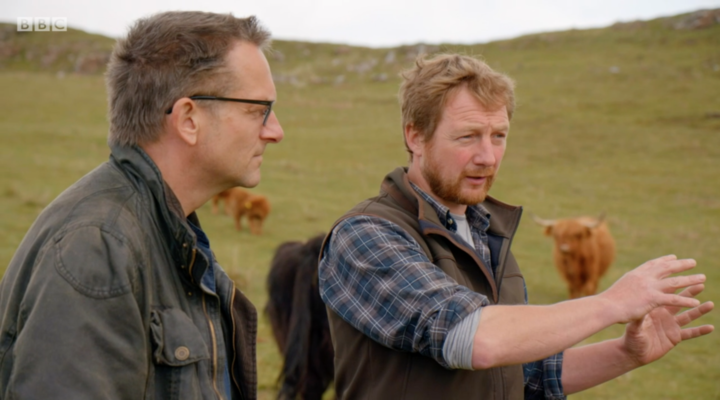The vital role of omega-3 fatty acids in everyone’s life

No nutritionist would recommend a diet that didn’t have some fat. Whether you get it from meat, fish, nuts or vegetables – fat, like protein is essential for health.
Different foods have different forms of fat – we’ve got olives, walnut, avocado – most of these fats are liquid at room temperature, the odd one out is this one that comes from the beef, which is solid at room temperature.
The reason there are so many different types of fat is because there are so many different types of building blocks for fat. Each fat is in turn made up of something called fatty acids. Complex fat chains are built by assembling these smaller units of fatty acids.
These fatty acids are essential to the smooth running of our bodies. We are so dependent on fat we have evolved cellular machinery to build most of the fatty acids that might be missing from our diet.
There are two types however that our body cannot make – they are omega-6 and the rather more elusive omega-3. These we have to get from food.
Omega-6 is easy – there is plenty in vegetable oil. Omega-3 is rarer. It is found in oily fish like salmon – but where else can you find it?
These Highland cattle are really well adapted to life in Scotland and though they sport the longest hair of any cow, that’s not what makes them special. What marks these cattle out is that unlike most cattle their meat is rich in elusive omega-3.
Ian Mckae looks after just 50 cattle. They are free to roam over a vast expanse of wild moorland.
The type of breed we’ve got here utilises this ground really well – they have a massive stomach and they can take in a huge amount of roughage and then go and lie down and digest it.
And it’s this natural environment that provides the omega-3 that we can’t live without. In fact, it’s absolutely vital for building and maintaining my favourite organ – the brain. Surprisingly enough a brain is half fat, and of that fat, a quarter is made up of omega-3.
All this omega-3 forms the connections between every nerve cell in the brain – cells which send and release electrical impulses from the brain’s 80 billion other cells. Low levels of omega-3 have been linked to depression and anxiety.
Fortunately, there is a ready supply of the stuff scattered throughout this particular landscape. It is found naturally in the oils in the grass. But the highest dose can be got from a delicious mouthful of Highland clover.
Magnify the clover 600 times and you’d be able to see microscopic globules of omega-3 fat.

The cattle face the same challenge as us. They have to get their omega-3 from their diet. It matters what they eat. Grain contains very little omega-3 so factory farmed meat is lacking in this vital fatty acid.
But these cows get their fill from grass and clover. Once eaten, the essential fatty acids enter the cells in their body – making this grass-fed steak far higher in omega-3 than beef intensively farmed and fed on grain alone.
Both omega-3 and omega-6 are vital for life. But it is a balancing act. Too high a ratio of omega-6 to omega-3 has been linked to a whole range of inflammatory diseases from Type II diabetes to arthritis. And a recent US study found it wasn’t unusual for there to be 25 times more omega-6 than omega-3 in people’s diet – most of it coming from the vegetable oil used to cook fast foods like burgers, chips and cookies.
And as omega-6 is so easy to get, it means we really do have to concentrate on getting enough omega-3.
So, keep a look out for good sources of omega-3 – like beans (soya beans 13g/kg), salmon (25g/kg), mackerel (25g/kg) and grass-fed beef (10g/kg).
I like the fact that I met this cow’s relatives, that it had a happy life and it didn’t travel very far to get to my plate. I also really like the fact that it is rich in omega-3 and it is incredibly succulent.



